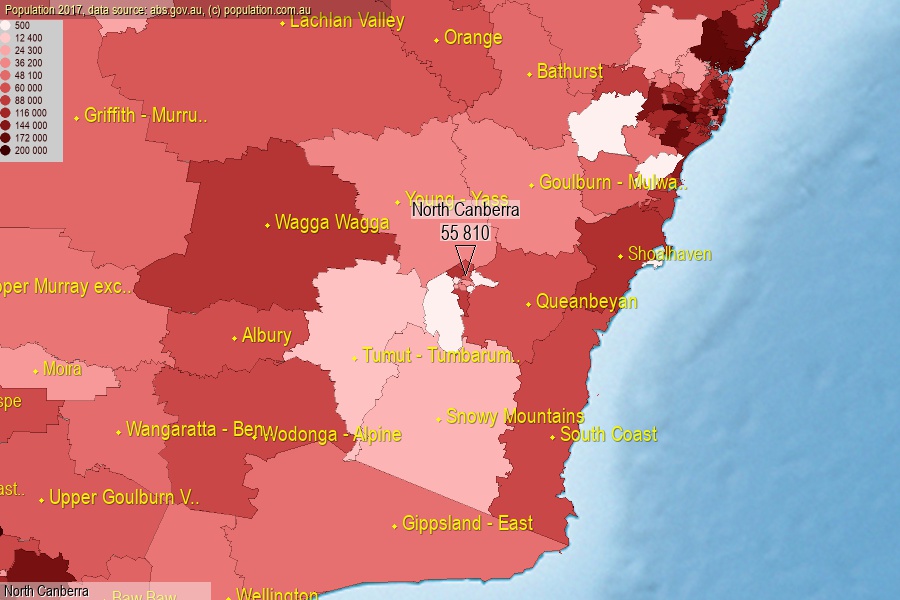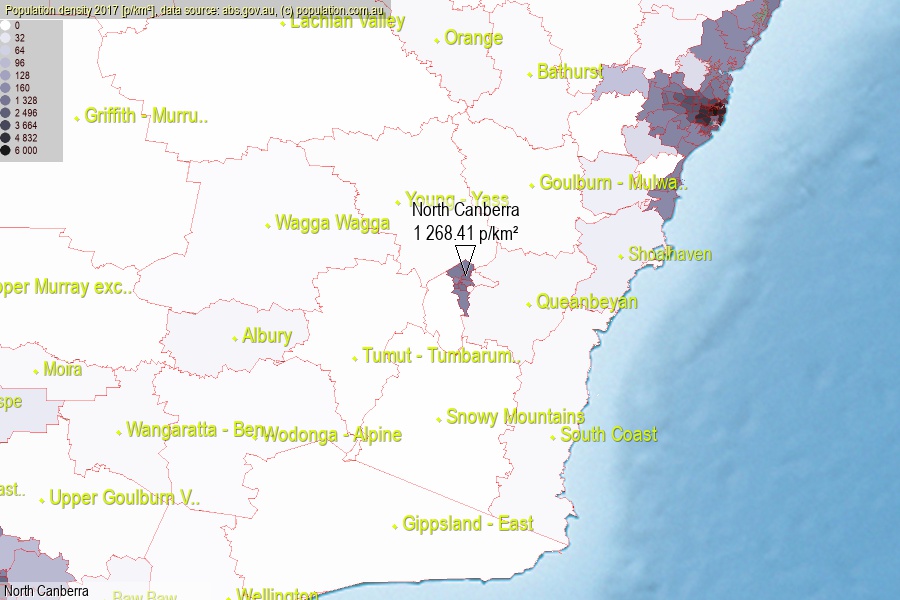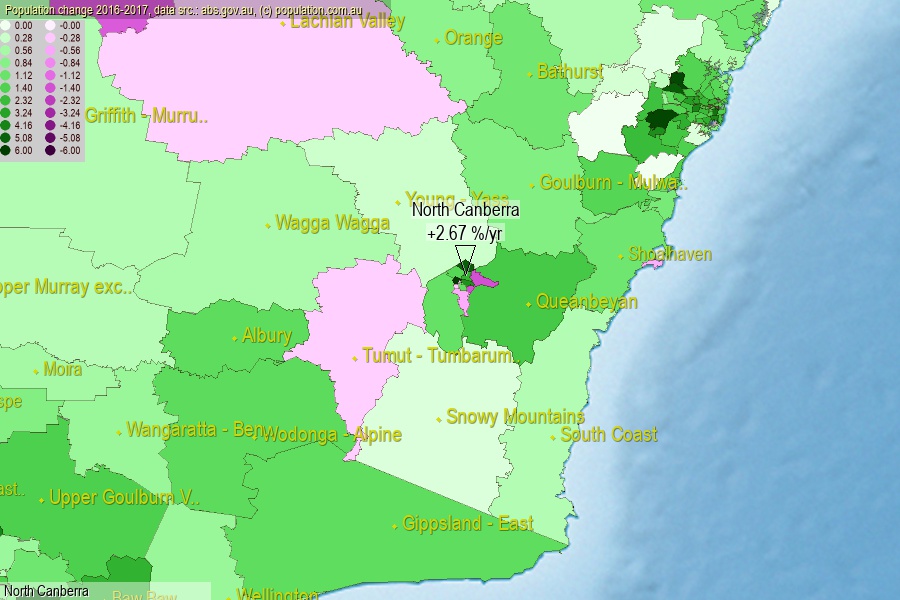 population.com.au
population.com.auLast official estimated population of North Canberra (as Statistical Area Level 3) was 55 810 people (on 2017-06-30)[2]. This was 0.23% of total Australian population and 13.314% of ACT population. Area of North Canberra is 44.00 km², in this year population density was 1 268.41 p/km² . If population growth rate would be same as in period 2016-2017 (+2.67%/yr), North Canberra population in 2025 would be 68 933. [0]



Click to enlarge. North Canberra is located in the center of the images.
Population [people], population density [p./km²] and population change [%/year] [2]
View borders » (new window) [4]
[1991-1992] -0.39 %/Y
[1992-1993] -1.22 %/Y
[1993-1994] -0.64 %/Y
[1994-1995] -0.94 %/Y
[1995-1996] +0.05 %/Y
[1996-1997] -0.74 %/Y
[1997-1998] -0.78 %/Y
[1998-1999] -0.10 %/Y
[1999-2000] +0.65 %/Y
[2000-2001] +0.96 %/Y
[2001-2002] +2.22 %/Y
[2002-2003] +3.12 %/Y
[2003-2004] +2.62 %/Y
[2004-2005] +2.12 %/Y
[2005-2006] +2.76 %/Y
[2006-2007] +3.55 %/Y
[2007-2008] +2.61 %/Y
[2008-2009] +2.45 %/Y
[2009-2010] +2.15 %/Y
[2010-2011] +2.40 %/Y
[2011-2012] +2.55 %/Y
[2012-2013] +1.89 %/Y
[2013-2014] +1.00 %/Y
[2014-2015] +1.33 %/Y
[2015-2016] +1.85 %/Y
[2016-2017] +2.67 %/Y
[0] Calculated with linear interpolation from officially estimated population
[1] Read more about SA3 and Australian Statistical Geography Standard (ASGS) on abs.gov.au
[2] Population data from Australian Bureau of Statistics (Population and density: 2017; change: 2016-2017)
[3] Digital Boundaries: Australian Statistical Geography Standard (ASGS) 2016.
[4] Border coordinates are simplifyed using Ramer-Douglas-Peucker algorithm.